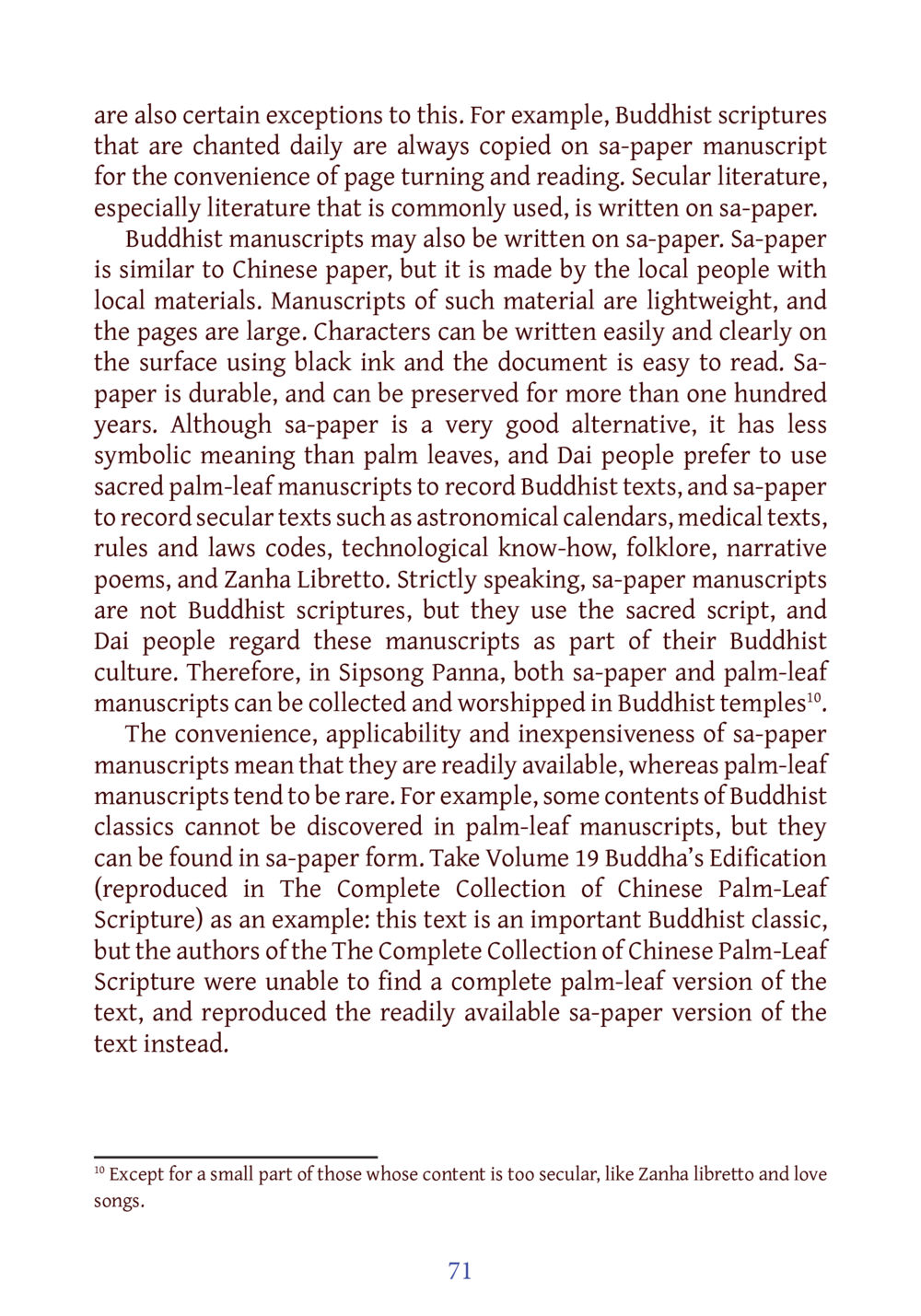The Role of Sa-Paper in Buddhist Manuscripts : หน้า 92/141
DIRI Journal : หน้า 92/141 Exploring the significance and use of sa-paper for Buddhist scriptures and secular literature in Sipsong Panna.
4 ครั้ง

สรุปเนื้อหา
Sa-paper, made by local artisans, serves as a practical alternative for copying both Buddhist and secular texts in Sipsong Panna. Although less symbolic than palm leaves, sa-paper's ease of use and durability allow it to complement the sacred palm-leaf manuscripts. With large, lightweight pages suitable for clear writing, sa-paper provides a means to preserve important texts alongside traditional methods. While both forms are worshipped in temples, sa-paper remains more accessible for everyday use, containing pivotal writings often not found in palm-leaf formats. Thus, sa-paper represents a bridge between sacred and secular texts in the region's culture and traditions.
หัวข้อประเด็น
-Sa-paper in Buddhist culture
-Comparative analysis of sa-paper and palm-leaf manuscripts
-Accessibility of Buddhist texts
-Literature preservation methods
-Secular literature and its significance
ข้อความต้นฉบับในหน้า
หน้าหนังสือทั้งหมด













































































































































